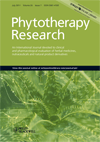5-Hydroxymethylfurfural from Black Garlic Extract Prevents TNFα-induced Monocytic Cell Adhesion to HUVECs by Suppression of Vascular Cell Adhesion Molecule-1 Expression, Reactive Oxygen Species Generation and NF-κB Activation
Abstract
5-Hydroxymethylfurfural (5-HMF) is a common Maillard reaction product; the reaction occurs during heat-processing and the preparation of many types of foods and beverages. Although 5-HMF has been proposed to have harmful effects, recently, its beneficial effects, including antioxidant, cytoprotective and antitumor effects have become increasingly apparent. It was found recently that a chloroform extract of aged black garlic shows antiinflammatory properties when administered to human umbilical vein endothelial cells (HUVECs). This study investigated the antiinflammatory potential of 5-HMF purified from the chloroform extract of aged black garlic in tumor necrosis factor-α (TNF-α)-stimulated HUVECs. Treatment of HUVECs with 5-HMF strongly suppressed TNF-α-induced cell surface and total protein expression of vascular cell adhesion molecule-1 (VCAM-1) and intercellular cell adhesion molecule-1 (ICAM-1) as well as their mRNA expression. In addition, 5-HMF significantly inhibited TNF-α-induced reactive oxygen species formation, and markedly reduced THP-1 monocyte adhesion to TNF-α-stimulated HUVECs. Furthermore, 5-HMF significantly inhibited NF-κB transcription factor activation in TNF-α-stimulated HUVECs. The data provide new evidence of the antiinflammatory properties of 5-HMF in support of its potential therapeutic use for the prevention and management of vascular diseases such as atherosclerosis through mechanisms involving the inhibition of VCAM-1 expression and NF-κB activation in vascular endothelial cells. Copyright © 2011 John Wiley & Sons, Ltd.




